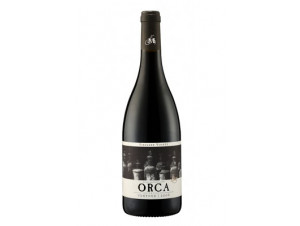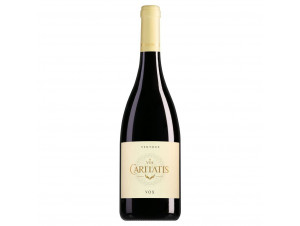You have no items in your shopping cart.
Wine Ventoux
You may know this appellation by its former name, "Côtes de Ventoux"? The name of the AOC was only changed to "Ventoux" in 2009. This Vaucluse appellation, which is part of the wider Rhône Valley vineyard, is one of the oldest and most extensive in France, as we shall discover. Read more on Ventoux
-
Top Selling
-
Top Selling
-
Top Selling-20%
Appellation Ventoux
The Ventoux is one of the oldest vineyards in France
It is well known that it was the Romans who, when they occupied our territory, brought us the culture of the vine and the vinification of grapes into wine. The Rhone Valley region, due to its proximity to Italy, was one of the first regions to be occupied. Indeed, although the occupation extends to the whole territory from the first two centuries AD, amphorae found around Mont Ventoux (where the Ventoux AOC is now located) date from the 1st century BC, and thus record the early date when wine and the Romans arrived in the region, and more precisely in Mazan.
Over time, the vineyard flourished and survived despite the end of the Roman occupation, texts dating from the 9th century record purchases of plots between various notables in the region, and then we find the names of the first winegrowers, recorded in the archives of the Popes in the 14th century. The viticulture has remained an important activity in the region, following in particular the technological evolutions, as told in the texts of the end of the 18th century, where the first bottling is evoked.
The rise and fame of wine in the region is even written about by André Julien, in Topographie de tous les vignobles connus, published in 1832, and which mentions the "Grenache de Mazan", a direct reference to the wines produced in the region. Unfortunately, in the 19th century the vineyard was affected and heavily hit by phylloxera. But from 1939, the winemakers are grouped and form a wine union to promote their wines. The wines of the region were then recognised and registered, first as VDQS (Vin Délimité de Qualité Supérieure) in 1953, then as AOC in 1973.
The appellation covers more than 50 communes in the Vaucluse, with a total area of 5,700 hectares planted, making it one of the largest appellations in France. The AOC is a biosphere reserve classified by UNESCO.
Mont Ventoux as a playground
The Ventoux vineyard is an exceptional terroir: a biosphere reserve surrounding Mont Ventoux, the biodiversity is particularly well preserved. The climate is predominantly Mediterranean, with some areas of continental influence. Rainfall is very rare, but very violent, although the sunshine is optimal, and the mistral helps to dry the vines as quickly as possible after rain or storms, thus preventing the appearance of diseases.
There are mainly three different types of soil in the appellation: red soils, derived from the breakdown of limestone; soils formed from a mixture of ochreous clay and sands and soils of pebbles or calcareous scree, originating from Mont Ventoux. All three colours of wine are allowed to carry the Ventoux label on their labels. The majority of the wines produced are red (56%), followed by rosé (38%) and finally white (6%). Red and rosé wines are produced from the same grape varieties: Grenache noir, Syrah, Cinsault, Mourvèdre and Carignan. Picpoul noir and Counoise are secondary grape varieties, authorised up to a maximum of 20%.
The white grape varieties used to make white wines are Clairette, Bourboulenc and Grenache blanc. The secondary grape varieties that can enter the blend are Ugni, Picpoul, Roussane and Pascal blanc, up to a maximum of 20%.
Vinifications are very free in this appellation, and it is up to the winemaker to choose how he wishes to vinify his harvest. Red wines can be kept for 3 to 5 years, rosés and whites should be drunk within 2 years.
What are the specificities of the wines of the Ventoux appellation
Ventoux reds
To the eye, the red wines have ruby colours, very bright. The nose expresses notes of red fruits and spices. Sometimes, depending on the vinification and maturation of the wine, one can also find aromas of liquorice, leather, truffle. On the palate, we find these aromas again, full of richness. The structure is usually more fine than robust, and one sip quickly calls for the next!Ventoux rosés
The colour of rosé wines can range from very pale to almost ruby, depending on the type of rosé made. On the nose, very pleasant notes of flowers appear, such as rose, and are reinforced by red fruits, such as cherry and raspberry. On the palate, the wine is very greedy, very fluid, full of fresh fruit flavours.Ventoux whites
The white wines have a particularly limpid colour, with light green or yellow reflections. These wines are also very floral, with notes of iris and narcissus, and white fruits such as pear, apple, and some citrus. The mouthfeel is very fluid, refreshing.What are the great vintages of AOC Ventoux?
The 2000, 2001 and 2005 vintages are often referred to as the mills of the millennium! More recently, the 2015, 2016, 2017 and 2018 vintages are also really successful vintages that will offer you some great tastings.
What dish to pair a bottle of Ventoux with?
The red wines will form very beautiful pairings with grilled red meats and seasoned with fine Provencal herbs. Daubes also form very good matches with these wines, as well as stews, game and strong cheeses. Rosé wines go very well with poultry and charcuterie, or with Asian cuisine. The whites will be very good companions of summer salads, grilled fish, seafood or even slightly matured cheeses, especially goat cheese.
2 AOC Ventoux domains to discover
Chêne Bleu
The 30 hectares of vines are cultivated by their owner in the respect of tradition, to create the most generous wines possible. This cuvée is very fresh, crisp and supple, with very melting tannins.Cave De Bonnieux
This 99-year-old cooperative winery produces a large number of red, rosé and white wines. This rosé, fresh, lively and fruity, will show you the beauty of this exceptional terroir.
Vallée du Rhône appellations
Côtes-du-Rhône-Villages Laudun
Côtes-du-Rhône-Villages Massif-d'Uchaux
Côtes-du-Rhône-Villages Plan-de-Dieu
Côtes-du-Rhône-Villages Rochegude
Côtes-du-Rhône-Villages Sablet
Côtes-du-Rhône-Villages Séguret
Côtes-du-Rhône-Villages Signargues






































 TWIL - Achat de Vin
TWIL - Achat de Vin


